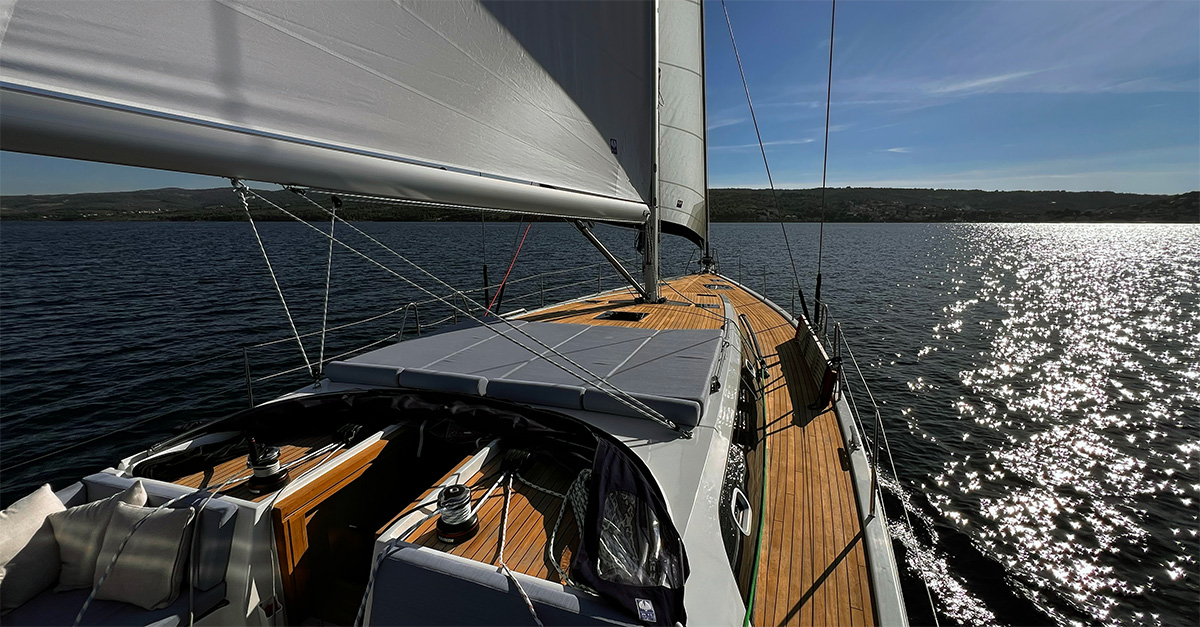Ben Ireland raises a glass to Porto, the gateway to the Douro Valley.
Click here to download and save as a PDF.
The story goes that a Scottish wine merchant, who had grown rich on the success of the thriving port wine trade, stuffed his pockets so full of gold coins that when he fell overboard he was too heavy to swim to safety, and drowned in the Douro river with only his own greed to blame.
Although all good folktales are exaggerated, the point of the story is that Porto is founded on the fortunes of this fortified wine. If you glance across the mouth of the Douro river, you can see brands of port so familiar that UK consumers could be forgiven for assuming they were made at home.
“With the imposing Dom Luís I Bridge towering above the walkways that are home to many bars and restaurants, it’s quite the view.”
It’s even more spectacular at night, with the likes of Graham’s, Cockburn’s, Croft and Taylor’s advertised in lights on the hills of Vila Nova de Gaia, the side of Porto (and technically a different city) where wine merchants built their cellars. With the imposing Dom Luís I Bridge towering above the walkways that are home to many bars and restaurants, it’s quite the view.
The city’s history is inextricably linked to the drink, made from grapes found in the vineyards of the Douro Valley and sold from the city centre.
With the rise of food and drink tourism, and a new direct Tap Air Portugal flight from London City airport, the tourism board for Porto & the North of Portugal is making the most of those links with the UK, a huge importer of its most prized product.
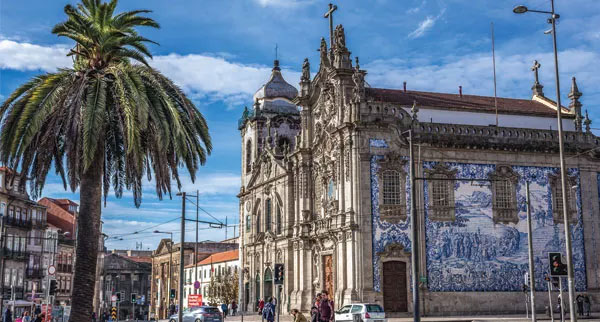
What to see
Porto is not a huge place, so the best way to see the city is to walk its streets, past buildings that date back to the 12th century.
The best place to start is the Clérigos Church, or ‘clergyman’s tower’, which locals use as a vantage point and meeting place. From there you can wander through a maze of Baroque architecture and spot a hospital that was built using the tax collected on selling port wine.
Worth a look is the narrowest building in the city, built to separate the Carmo and Carmelitas churches, which it’s safe to say weren’t each other’s biggest fans. The Carmo church, on the corner of Rua do Carmo and Praça de Carlos Alberto, is of particular note as it was the first in the city to have a tiled design on its exterior.
“Wander through a maze of Baroque architecture and spot a hospital that was built using the tax collected on selling port wine.”
The craze of decorating buildings with ceramics dates back to the 19th and early 20th centuries, when Portuguese merchants who had made their fortunes in Brazil returned to the city and wanted to show their wealth – even though they were labelled ‘chamber pot houses’ by Portugal’s old money at the time.
Harry Potter fans even have something to look out for here. The 1906 art nouveau Lello bookshop once frequented by JK Rowling, whose first husband was Portuguese, is credited as the inspiration for much of the detail at Hogwarts. But customers must leave time if they’d like to go inside as the ‘wizarding world’ is already flocking to the building.
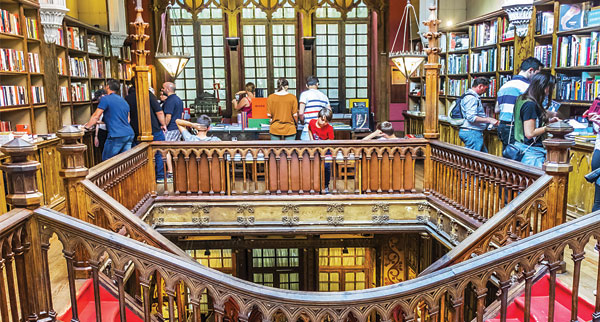
Down the hill from the bookshop are large and attractive plazas and the surprisingly ornate São Bento train station, from where you can catch a train to the Douro Valley for about €11. There are 22,000 tiles decorating the vestibule of the station, depicting various historical scenes including the 14th-century marriage of King John I, who ruled Portugal and the Algarve, and British royal Philippa of Lancaster.
Just up from the station is the city’s main cathedral – the perfect spot for an Instagrammable picture – and the old town, which rent controls have kept as homes to many locals, maintaining their authenticity.
“There are 22,000 tiles decorating the vestibule of the station, depicting various historical scenes including the 14th-century marriage of King John I.”
A pleasant walk around the city leaves plenty of time for a leisurely lunch which, when in Porto, should be at a wine cellar. Graham’s sits on the hill of Vila Nova de Gaia with stunning views back across the river to Porto from its terrace.
After lunch, explore the cellars below, home to seven million litres of port wine, with some barrels containing up to 73,000 litres each. It’s quite a staggering sight to see them lined up together – including 3,200 of the standard 600-litre barrels. Look out for vintages that date back to 1868, with some on sale for as much as €6,500.
A tasting, which can be booked as part of the tour, includes three recent vintages and a mixture of tawny and ruby varieties of different ages.
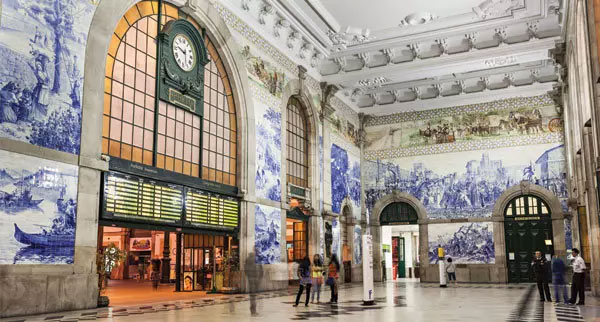
Where to go next
Once you know how Porto was built on the success of port wine, why not see where that wine comes from? The Douro Valley, a Unesco World Heritage area that skirts its namesake river, is a picture of luscious greenery.
Over centuries of nurturing the land to produce plentiful grapes for port wine production, its distinctive hills are carved out like the contours of a map.
Bridges have opened up easy road access, taking roughly an hour and a half to drive to the picturesque town of Pinhão. It’s home to Quinta da Roeda, where visitors can tour the vineyard with its seven miles of vines, and learn how the port wine is produced for Croft.
“Rooms are spacious and airy and Manuel invites guests for dinner, with home-cooked meals designed for sharing.”
Agents can even arrange for their customers to get stuck in to treading the wine themselves. It’s a 30-minute version of the traditional four-hour process, but visitors can still get up to their knees in 3,000kg of grapes with a party vibe encouraged, in keeping with tradition.
There are more boutique hotels and guest houses popping up in the area as its tourism industry enjoys a surge. One fine example is Morgadio da Calçada, with rooms attached to a 17th-century mansion, which has been owned by the same family for centuries. Current owner Manuel Villas-Boas has even restored it in its original style.
Now, the family not only grows grapes but makes wine, as well as soap and other products. Its rooms are spacious and airy and Manuel invites guests for dinner, with home-cooked meals designed for sharing. Cod fish pie, a Portuguese speciality, is a favourite.
The ambience feels like dinner at a friend or family’s house, and with views over the impressive Douro Valley, what better place to drink to the history of Porto and its surrounding region with a glass of – you guessed it – port wine.
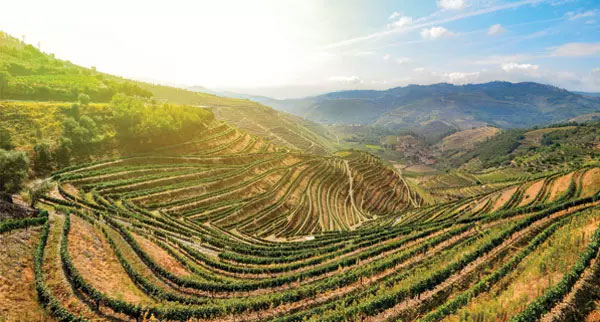
Tried and tested
Hotel Teatro in Porto is a converted 19th-century theatre, just 10 minutes’ walk from the Douro river, which has kept many of its original features.
You feel like the star of your own show as spotlights come on as you walk through the corridors, plus there are theatre-style curtains in the bars and reception, which is designed to look like a box office.
Guests receive a ‘ticket’ to their room, another nice touch that makes the 74-key hotel stand out as something unique and chic.
Book it: Rates from €150 per night for a double room with breakfast.
hotelteatro.p
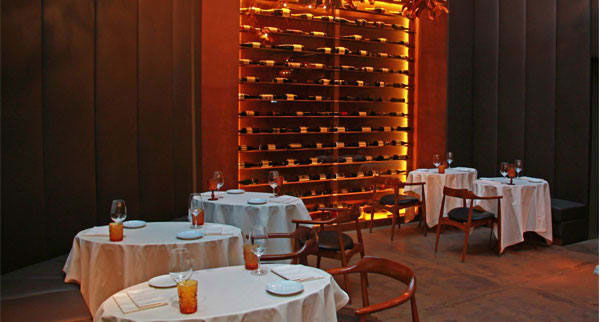
Getting there
Tap Air Portugal flies to Porto twice daily from Gatwick and has recently added a new route from London City, daily except Saturdays. With departures at 2.50pm, the airline hopes to capitalise on the quick check-in service at City – where passengers are guaranteed to get through security and bag-drop in 30 minutes – to capture the market of London-based workers taking a long weekend using only Friday afternoon as leave.
For longer trips, Porto can be twinned with Portuguese capital Lisbon. Tap has daily departures to Lisbon from Heathrow, Gatwick, London City and Manchester.
Fares from City to Porto start at £71 one-way or £110 return.
flytap.com
Read more
Exploring the authentic medieval town of Obidos, Portugal
City breaks in Spain and Portugal
Lisbon: How to make the most of a city break with a toddler




